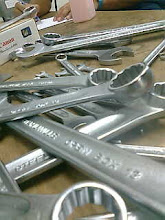England exited the Depression with fewer motorcycle companies facing new and growing competition from cheaper domestic automobiles. But the remaining firms were more competitive and aggressive. With a smaller market, racing and competition drove development. The motorcycle was still a utilitarian vehicle, inexpensive transportation aimed at the working man, but there was greater focus on design and style - and power.
Another factor accelerating the development of motorcycling was the change in roadways across Britain. In the decades before and after the war, governments launched road improvement programs, building or upgrading connecting links between towns and cities to improve internal trade and transportation. These led to the development of road cafes - initially intended as convenience stops for truck transport, they soon became favourite spots for motorcyclists. The sport of cafe racing grew from bikers who would race between stops, or between cafes and local landmarks. Cafe racing was in turn another enticement for improved performance and encouraged backyard mechanics to tinker with their machines. The Triton (a Triumph engine in a Norton frame) and Tribsa (Triumph engine in a BSA frame) are examples of their entrepreneurial efforts.
A similar road-building program in the post-war USA saw the development of more than 41,000 miles of highways across the country. Instead of encouraging a generation of bikers to race, it led to the development of suburban sprawl and the decline of inner city life in America. The result today can be seen in the SUV: a lumbering, ugly, gas-guzzling, and unsafe behemoth..
Sunday, 10 July 2011
Subscribe to:
Post Comments (Atom)






0 comments:
Post a Comment